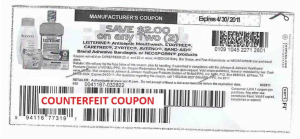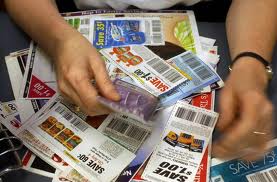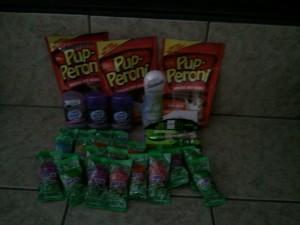In my “Tuesday Tips” post this week, I talked about ethical coupon usage and one of the things that I mentioned was not copying coupons. Some people assume that all printable coupons are the same and that it’s OK to copy them, but that’s not true and when people copy coupons and then use them, it hurts all of us!
I got several notes last night and early this morning about a $2/2 printable coupon that included Listerine, Aveeno, Carefree, and Band Aids. I have used this coupon in numerous match-ups and it was even included in my CVS and Target match-ups originally this week. The original information I found indicated that the coupon had been added to the CIC fraudulent coupon list. Apparently, someone copied multiple copies of this coupon and was selling them, too, which is why it is now on the list.
If you printed the coupon yourself from an original link, you can verify the authenticity here. Unfortunately, stores will be receiving messages from the CIC showing the counterfeit coupon and stores will not be able to tell which coupons are “valid” and which coupons are copied, so they will probably begin refusing all copies of this coupon. I’m hoping this will not affect the acceptance of other printable coupons at my stores because using coupons has gotten hard enough at several of my stores already!
For the record, printable coupons include a number of unique features to prevent you from copying them including watermarks and unique veri-fi codes in the upper right hand corner. When people alter or copy coupons, it hurts all of us. The manufacturers will not be reimbursed for these coupons and we will pay for it in increased costs. In addition, our stores will become less coupon friendly if they are “burned” by fraudulent/greedy coupon users.
Here are some tips for avoiding fraudulent printable coupons:
-Only print coupons from “reliable” sources such as the manufacturer’s website or well-known sites such as Coupons.com, Redplum.com, Smartsource.com, or Coolsavings.com
-Be wary of PDF-printable coupons UNLESS you get them directly from a manufacturer’s website or other valid source
-Don’t buy printable coupons from sites such as eBay
-If a printable coupon seems too good to be true (free, high dollar amount, etc.), it probably is. Check the CIC fraudulent coupon list here before printing.
Coupon fraud IS a punishable offense. Here are some statistics from the CIC:
As of this date,
Longest prison sentence: 17 years
Highest financial penalty: $5 million
Prison sentences of three to five years are not uncommon. Financial penalties generally vary, but have often been in excess of $200,000.
**Not one defendant has been acquitted in a CIC related coupon fraud case since operations began in 1986.
*This post may contain affiliate links. Please refer to my disclosure policy for more information











